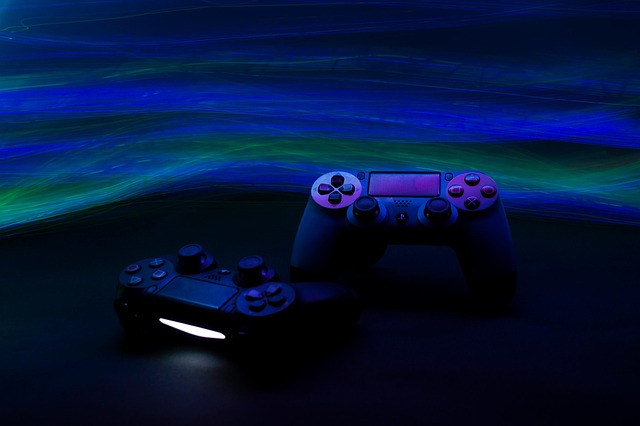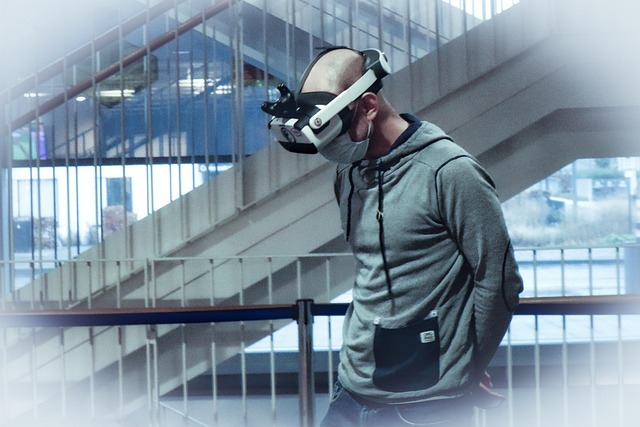Intro: Why Graphics Matter
The first thing a player notices about a game isn’t the story or mechanics—it’s what they see on screen. Graphics are the handshake, the gut check. Before a single line of dialogue unfolds or a button gets pressed, visuals set the expectations. They say, “This is the world you’re stepping into.”
But graphics aren’t just eye candy. They anchor immersion, communicate tone, and create emotional weight. A gritty art style builds tension. Lush visuals relax. Even the way a character blinks can add subtle cues to a story. Done right, graphics don’t just show the game—they help tell it.
Over the decades, tech has sprinted forward. From simple pixel blocks to photorealistic lighting and lifelike animations, every leap in hardware opened new outlets for creativity. Milestones like 3D acceleration, HD rendering, and now ray tracing have flipped the script on what’s possible without losing the soul of gaming. It’s not just about looking real—it’s about feeling real.
1970s–1980s: From Pixels to Playable Worlds
It started with a blip. Pong dropped in 1972 with two paddles, a square ball, and zero frills. This was gaming stripped to its bones, but it opened the door to interaction on a screen—something people hadn’t really experienced before. Arcades became the home for early gaming experiments, each machine a hardwired world built from blocks, beeps, and blurry outlines.
Then came the home consoles. Atari’s graphics were crude by today’s standards—chunky pixels and minimal animation—but they were revolutionary. With the Atari 2600, games like Space Invaders and Pitfall turned living rooms into adventure zones. By the time Nintendo rolled out the NES in the mid-80s, things leveled up. Mario bounced across 8-bit landscapes with recognizable enemies, chiptune music, and palettes that implied sky, water, bricks—barely, but enough.
Still, the tech was holding creators on a short leash. Limited CPU power, tiny file sizes, and palette restrictions forced developers to focus on mechanics and creativity. Characters had to be simple enough to read in a handful of pixels. That’s why Mega Man’s suit was blue—because the NES had more shades of blue than anything else. Constraints weren’t just technical—they were artistic. And somehow, that made the games better. Simple didn’t mean shallow. It meant tight, focused, and lasting.
This era didn’t just lay the foundation. It defined the basics—how to make images move and ideas play—even when the tools were barely able to draw a circle.
1990s: The 16-Bit Revolution and Rise of 3D
The ’90s hit hard with color, motion, and a taste of the third dimension. The Super Nintendo and Sega Genesis turned flat pixels into lively, animated worlds. Sprites popped with higher detail, backgrounds scrolled in parallax, and color palettes expanded far beyond what 8-bit consoles could handle. Mario had smoother jumps, Sonic ran with blur, and battles in RPGs looked closer to Saturday morning cartoons than the blocky grids of the ’80s.
Then came the turn. Enter PlayStation and Nintendo 64. Suddenly, games weren’t just sidescrollers—players moved through depth. Early 3D graphics were jagged, sure. Polygons clipped, faces were sometimes just textured triangles, but the ambition was obvious. Titles like “Super Mario 64” and “Metal Gear Solid” showed how space, movement, and camera angles could redefine gameplay.
Meanwhile, developers got creative with tech limitations. FMV (full-motion video) became a trend: real human actors or pre-recorded CG scenes added cinematic flair, especially in horror and adventure games. RPGs like “Final Fantasy VII” leaned into pre-rendered backgrounds—static, beautiful scenes that gave flat worlds a sense of realism without swallowing up system resources. These compromises didn’t feel like cut corners at the time—they felt like a step forward. And they were.
2000s: Texture Mapping and Realistic Worlds
The 2000s were the turning point. Suddenly, games were starting to look less like toys and more like movies. Graphics tech matured fast, with shaders, dynamic lighting, and bump mapping adding depth and realism that hadn’t been possible before. It wasn’t just about slapping better textures on models—it was about creating the illusion of form, shadow, and atmosphere. For the first time, game worlds felt alive.
Consoles like the Xbox and PlayStation 2 stepped into this era hard. They weren’t just more powerful—they were built to chase cinematic quality. Game intros started looking like film trailers. Environments got deeper, moods got darker, and character models moved and emoted in ways that pulled players further in. Titles like “Halo” and “Metal Gear Solid 2” didn’t just look better—they felt like experiences.
Meanwhile, PC gamers got a taste of customization that left consoles in the dust. The rise of modding communities and powerful GPUs meant ultra settings became the new frontier. You could tweak nearly everything—textures, lighting, even entire physics engines. And it wasn’t just for bragging rights; it pushed developers to build engines that could scale beyond a single spec.
In this decade, the bar was raised for what a game could look like. And once players got used to that level of detail, there was no going back.
2010s: HD Resolutions and Photorealism
The 2010s marked a turning point. What used to be premium—1080p resolution, stable frame rates, cinematic detail—became the baseline. PCs were already chasing sharp visuals, but now consoles caught up. With the PS4 and Xbox One, HD wasn’t optional—it was expected.
But it wasn’t just about pixels. This decade saw real-time physics and dynamic lighting move into the mainstream. Water actually flowed. Shadows changed with the environment. Explosions interacted with surfaces. These systems brought games closer to simulating reality, not just imitating it.
Open worlds took off, too. Genres collided in vast maps packed with detail and freedom. That scale needed smarter tools. Engines like Unreal and Unity evolved fast, offering plug-and-play pipelines for indie developers and AAA studios alike. They made high-fidelity game design more accessible—without needing a Hollywood budget.
The push for realism and accessibility didn’t just raise expectations. It leveled the field. Suddenly, small teams could create sprawling, visually impressive games alongside the giants. The industry didn’t just upgrade its look—it cracked open.
Today: Ray Tracing, AI, and Hyperrealism
Ray tracing isn’t just a buzzword—it’s a game-changer for how light behaves in digital worlds. Instead of faking shadows and reflections like older systems did, ray tracing simulates how light actually bounces in the real world. The outcome? Cleaner reflections, natural lighting, and a serious boost in realism. Wet streets gleam for real. Glass reflects what’s behind you, not a blurred placeholder. But it’s also resource-heavy, often toggled off on lower-end systems for performance.
AI is handling more of the heavy lifting, too. Upscaling tools like DLSS and FSR take lower-resolution images and smartly sharpen them in real time, giving you higher frame rates without the visual downgrade. It’s also creeping into animation—motion smoothing, facial expressions, filler frames—all generated on the fly. Good news for devs under pressure and players hungry for smoother, better-looking gameplay.
Then there’s cross-platform parity. The days of PC players blowing consoles out of the water are fading fast. With better optimization and shared tech stacks, games are starting to look just as slick across platforms. That’s not just nice—it’s necessary when game communities live across every screen.
Finally: realism isn’t the only path. Plenty of developers are leaning into stylized design. Think cel-shading, surreal color palettes, or hand-drawn aesthetics. It’s not about horsepower—it’s about identity. Realism might impress, but stylized worlds stick with you.
In 2024, graphics are smarter, not just shinier.
Tomorrow: Blurred Lines Between Reality and Game
Graphics aren’t just getting better—they’re crossing into something stranger. Real-time rendering is on the cusp of a major leap, driven by smarter engines and more efficient hardware. That means richer environments, more fluid shadows, instant texture loads—all happening live, without frame drops. The days of loading screens and texture pop-ins are numbered.
AI is also marching in. Avatars and NPCs are no longer wooden script-followers. We’re seeing early glimpses of characters that respond with real nuance—powered by machine learning and language models. These digital beings aren’t just better-looking; they’re becoming believable.
But the real curveball might be AR and VR. With lighter headsets and better fidelity, “graphics” stop being flat, screen-bound assets and start becoming part of your space. A dragon in your living room, a strategy map on your coffee table. Suddenly, the conversation isn’t just about how lifelike a character looks—it’s about whether they feel like they’re truly there.
For more on where tech is headed and how it will change the way we play, check out The Future of Gaming: AR, VR, and Beyond.
Wrap-Up: What It All Means for Gamers
Graphics will never be the full story, but they’re rarely just background noise. Visuals set the tone, create mood, and sometimes even drive gameplay mechanics themselves. From the glow of neon reflections in a cyberpunk alley to subtle facial ticks in a key story cutscene, good graphics shape how we experience games—even when we don’t notice it happening.
That said, developers constantly juggle two opposing forces: beauty and performance. Pushing visual boundaries usually comes with a cost—frame rate dips, overheating hardware, or massive install sizes. This has pushed studios to optimize harder than ever, striking a careful balance between polish and playability.
As visual tech continues to evolve—AI-driven enhancements, real-time physics, dynamic animated scenes—our expectations follow suit. The bar keeps moving. And while a game can still succeed on the strength of its mechanics or story alone, we can’t deny the power of sharp visuals to elevate the entire experience. In the end, great graphics aren’t just about wow factor. They’re another tool in storytelling, immersion, and player connection.




